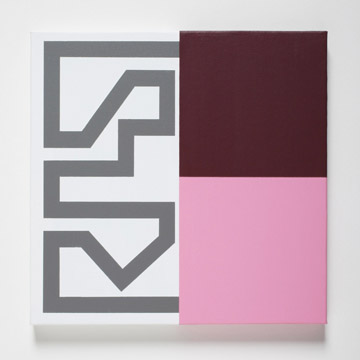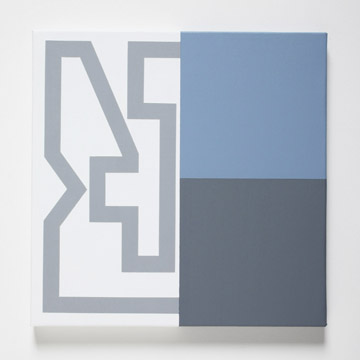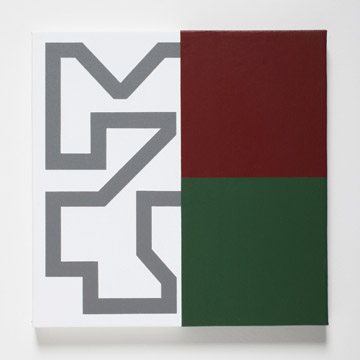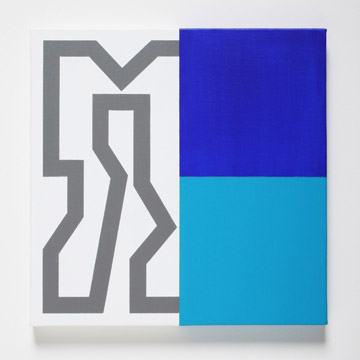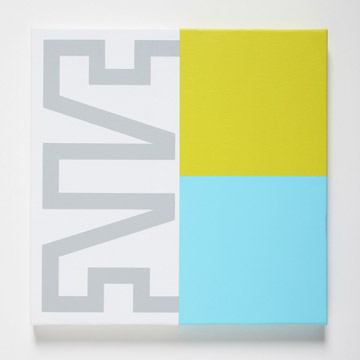The character of everything we see is defined by form and color. Form and color are distinct qualities that not only complement, but also depend on each other. The form, however, is always the essence.
The Meander painting is based on the idea of using form and color as opposing entities – the form to engage the intellect, and the color to evoke emotions. Of course, intellect and emotion are intertwined; one never acts without the other.
The painting’s square surface is vertically divided in half. The left side contains the grey meander form on white, and the right side is occupied by two color squares. The meander’s elaborate form juxtaposed with the two plain color squares creates ambivalence between thinking and feeling.
While the reaction to the colors is primarily emotional, the meander’s zigzagging form engages the viewer’s intellect and raises questions: What does it represent? What is the significance of the meander’s connection to the two color squares? Does it continue behind the colors? Where does it start and end?
Creating the meander is a spontaneous process by drawing on paper with pencil. Later, the form is developed and refined to perfect the figure/ground relationship. Establishing the colors is influenced by aesthetic preference, feeling, and experimentation.
